CircleAims SEO Services
Your Path to Ranking First on Google
Introduction
In a digital world that changes every day, competing for the top spots on search engines like Google has become a necessity, not a luxury. Today’s customers don’t search for long; they click the first results they see. This is where CircleAims comes in, offering integrated SEO solutions tailored to help your business be the first result where your customers are searching.
In a world where the customer journey now begins—and often ends—by typing a phrase into a search box, Search Engine Optimization (SEO) is no longer a marketing luxury or a side task; it has become the backbone of any digital growth strategy. A website that doesn’t appear when your potential customers search for their problem, solution, or your product is like a luxury store on a street with no signage.
Here, SEO gives your site discoverability, turning visits into engagement—and engagement into measurable returns.
SEO Services at CircleAims
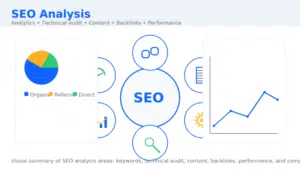
SEO Services
What makes SEO different? Unlike paid ads whose results stop when spending stops, SEO builds long-term assets: a sound technical foundation, content that answers search intent, and trusted authority in the eyes of both users and search engines. It’s a cumulative investment that improves site quality and user experience,
and increases the share of organic results that users have historically trusted. Most importantly, it gives you the ability to attract qualified traffic—people with clear intent who are already looking for what you offer.
SEO services start with a comprehensive audit that reads your site the way search engines do: load speed, indexing issues, page structure, internal links, mobile experience, and structured data. Next comes a content strategy built on precise keyword research that respects search intent (informational, commercial, local) and turns it into pillar pages, supporting articles, service pages, and optimized category and product pages. In parallel,
technical SEO raises performance standards (Core Web Vitals), addresses duplication, and fine-tunes sitemaps and meta tags to facilitate crawling, indexing, and ranking.
The picture isn’t complete without reputation building: high-quality natural links and brand mentions on trusted platforms (Digital PR), strengthening local presence through Google Business Profile, consistent NAP data, and review generation—or expanding globally via hreflang management and localization strategies. This integrated loop makes your site more visible on Google Maps, in “near me” results, and in traditional search results alike.
SEO is not a one-size-fits-all recipe to copy and paste, but a continuous, data-driven methodology. That’s why services are run with clear goals and KPIs: growth of top-ranking keywords, improved CTR, increased qualified organic traffic, and—above all—real conversions (calls, quote requests, sales). These
numbers are read via the integration of Google Analytics 4 and Search Console, plus executive dashboards that link organic performance to business impact, keeping decisions grounded in facts rather than hunches.
Why now? Because the search landscape is changing fast: continuous algorithm updates, a tighter focus on user experience and performance, and growing competition for attention. Those who lock down the fundamentals first—technically, content-wise, and authority-wise—gain an advantage that’s hard to catch.
In reality, SEO works best alongside your other channels: it lowers acquisition costs for ads thanks to better landing pages, feeds your social campaigns with topics your audience cares about, and extends the lifespan of each piece of content by optimizing it for search.
Whether you’re a startup seeking your first slice of the market, an online store looking to expand share, or an established brand aiming to reduce acquisition costs and maximize returns, SEO services give you a practical roadmap—from insights to execution to ongoing optimization. It’s the systematic way to turn your site from a “beautiful storefront” into a growth engine that works quietly—but effectively—every day.
What Is SEO and Why Is It Important?
Search Engine Optimization (SEO) is a set of strategies and techniques aimed at increasing your website’s visibility in organic search results.
When your customer searches for “best restaurant near me” or “software company in Egypt,” appearing on the first page multiplies your chances of attracting potential clients.
The Importance of SEO for Your Business:
- Increase organic traffic.
- Reduce reliance on paid advertising.
- Boost digital credibility and reputation.
- Raise conversion and sales rates.
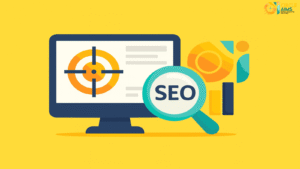
Why Choose CircleAims for SEO?
CircleAims is not just a service provider; it’s a success partner that helps you achieve your business goals with well-studied plans.
What Sets CircleAims Apart:
- A specialized team with extensive practical experience.
- Precise analysis of your market and target audience.
- Customized strategies that fit your business nature.
- Transparent reports that show results step by step.
SEO Services at CircleAims
1) Audit & Research
Before execution, we conduct a comprehensive audit to identify strengths and weaknesses:
- Analyze the most searched keywords.
- Study competitors.
- Inspect the site’s technical structure.
- Evaluate user experience (UX).
2) On-Page SEO
We focus on every detail that makes your pages search-engine friendly:
- Optimize titles and meta descriptions.
- Use keywords naturally.
- Improve site speed and browsing experience.
- Optimize images and link them to keywords.
3) Off-Page SEO
To raise your Domain Authority and build a strong reputation:
- Build high-quality backlinks.
- Manage online reputation.
- Publish marketing articles that support your brand.
4) Technical SEO
Because Google cares about technical UX, we provide solutions such as:
- Improve page load speed.
- Optimize URL structure.
- Enhance mobile compatibility.
- Create sitemaps.
5) Local SEO
If you own a local store or business, CircleAims helps you attract nearby customers by:
- Improving your visibility on Google Maps.
- Setting up your Google Business Profile.
- Optimizing ratings and reviews.
6) Performance Tracking & Reporting
No plan has value without follow-up. Therefore, we provide:
- Clear monthly reports on results.
- Constant strategy updates.
- Accurate KPIs.
How Does CircleAims Help You Grow?
Thanks to these integrated services, your site will:
- Appear on the first page of Google.
- Achieve targeted visits from real customers.
- Raise the conversion rate.
- Reduce the costs of paid ads.
We turn visits into recurring revenue through a data-driven growth methodology and continuous experimentation.
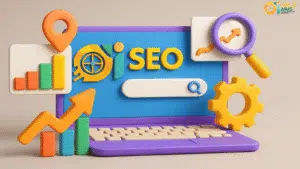
What We Do
- Full-Stack SEO: Technical audit (indexing, speed, Core Web Vitals), information architecture, content clusters & pillar pages, schema, and link acquisition via Digital PR.
- Smart Paid Ads (Google/Meta/TikTok): Intent-based campaigns, audience segmentation, budget optimization, integrated tracking.
- Conversion Rate Optimization (CRO): Fast landing pages, A/B tests, offer engines, simplified purchase paths, and trust elements.
- CRM Automation & Email Marketing: Welcome/abandoned cart/reactivation flows, segmentation, and behavior-based messaging.
- Analytics & Tracking: GA4, GSC, Tag Manager setup; Data Studio dashboards; clear decision metrics.
How We Work
- Discovery & Strategy: Market/competitor/customer-journey audit + keyword map and OKRs.
- Fix the Fundamentals: Speed, technical SEO, accurate tracking, pillar pages.
- Activate Channels: Optimized content, paid campaigns, additional acquisition channels (partnerships/local).
- Experiment & Optimize: Weekly sprints, A/B tests, budget reallocation toward higher ROAS.
What We Measure
Qualified traffic growth, rankings for high-intent keywords, CTR, CPA/CAC, conversion rate, LTV, and channel revenue.
Page Experience metrics: LCP / INP / CLS.
Who We Make a Difference For
- E-commerce: Strong category/product pages, reviews and product schema, fast internal search.
- B2B & SaaS: Qualified demand generation, solution/use-case pages, forms & CRM feeding.
- Local Services: Local SEO, Google Business Profile, reviews, and consistent NAP.
What You Receive From Us
A practical growth plan + content roadmap, a list of Quick Wins, live dashboards, and concise reports focused on impact—not noise.
Full documentation of everything we implement, so knowledge remains with your team.
The Importance of SEO for Your Website
Why Is SEO Important?
SEO is the most sustainable way to bring qualified visitors to your site without constant dependence on ads. When people search for a problem you solve, your site appears at the right moment—that’s the power.
How It Serves Your Business Goals
- Qualified visits: Attract users with higher intent to buy/contact than any broad acquisition channel.
- Trust & credibility: Repeated appearances in top results + featured snippets build the brand and increase CTR.
- Better UX: Work on speed, usability, and Core Web Vitals improves ranking and conversions together.
- Lower acquisition cost: Cumulative long-term returns compared to paid channels.
- Strategic resilience: Diversifying traffic sources reduces dependence on any single ad or social platform.
- Market intelligence: Search data reveals the customer’s real language and needs, guiding product and content.
- Local & international growth: Local SEO brings nearby customers; International SEO opens new markets.
What Happens If You Ignore It?
- Expensive reliance on ads for every visit.
- Losing keyword share to competitors with stable organic presence.
- Higher bounce rates due to slow site and poor relevance.
Where Does It Show Practical Impact?
- E-commerce: Optimized category/product pages, product schema, reviews → more traffic & sales.
- B2B & SaaS: Solution and use-case pages + content clusters → qualified leads.
- Local services: Google Business Profile, reviews, consistent NAP → calls and bookings.
Metrics to Measure Success
- Growth of qualified organic traffic (not just any traffic).
- Rankings for high-intent keywords + CTR.
- Conversion rate from organic visits (sales/leads).
- CAC from the organic channel vs. paid.
- Core Web Vitals: LCP/INP/CLS.
- Number of featured snippets/Rich Results and indexed internal links.
Common Mistakes That Reduce SEO Impact
- Focusing on search volume rather than search intent.
- Neglecting speed and mobile experience.
- Duplicate/thin content that adds no value (weak E-E-A-T).
- Random backlinks instead of relevant editorial relationships/links.
- Too many pages without clear search intent or internal linking structure.
Practical Steps to Start Now
- Technical audit: Indexing, sitemaps, crawl errors, speed.
- Keyword research based on customer problems (awareness → decision stages).
- Site architecture: Topic clusters and pillar pages.
- Write service/product pages that answer questions with clear CTAs.
- Optimize titles, meta, H1/H2, and descriptive internal links.
- Appropriate schema (Product/Article/FAQ/Organization).
- Image optimization (WebP + alt text) and reduce unnecessary JS/CSS.
- Improve mobile pages and Core Web Vitals.
- Build reputation and links via quotable content and Digital PR.
- Continuous measurement via GA4, GSC, and a conversion-focused dashboard.
What Do SEO Services Include?
1) Comprehensive Audit (SEO Audit)
- Inspect site structure, indexing, sitemaps, robots.txt.
- Analyze technical errors (speed, 404/301, duplicate data, indexing).
- Review content, keywords, and heading structure.
- Competitor benchmarking to extract content and link gaps.
2) Technical SEO
- Improve speed and Core Web Vitals (LCP, CLS, INP).
- Strengthen structure: internal links, breadcrumbs, pagination.
- Add structured data (schema) for product, article, FAQ, organization, etc.
- Smart indexing: manage canonicals, handle duplicate content, optimize robots and sitemaps.
3) On-Page SEO
- Keyword research and a keyword map (intent/volume/difficulty).
- Write/optimize H1–H3 headings, meta titles/descriptions, and improve CTR.
- Optimize image alt tags, internal links, and reading experience.
4) Content SEO (Strategy)
- Monthly editorial calendar (cornerstone articles, guides, service pages, FAQs).
- Content aligned to search intent (informational/commercial/local).
- Optimization of money pages and landing pages for high-value keywords.
5) Off-Page SEO
- Natural link building via Digital PR, partnerships, guest posts, and brand mentions.
- Backlink profile analysis and removal/disavow of toxic links.
- Activating brand signals (brand mentions).
6) Local SEO
- Configure Google Business Profile, consistent NAP data, and review generation.
- Local citations (directories) and site pages tailored to cities/branches.
7) E-commerce SEO
- Optimization of category and product pages; structured data for product, reviews, and price.
- Manage filters/facets to prevent duplicate page bloat.
- Improve internal search and shopping experience.
8) International SEO
- Manage hreflang, geo-targeting strategies, and content localization.
9) Measurement & Analytics
- Set up GA4, Search Console, and Tag Manager; track goals and events.
- Dashboards and executive reports linking organic traffic to revenue.
Key Performance Indicators (KPIs) to Track
- Growth in qualified organic traffic.
- Number of keywords in Top 3 and Top 10.
- CTR and average keyword positions.
- Conversions (form/call/purchase) and revenue from organic channels.
- Passing Core Web Vitals for your pages.
- Growth and quality of links (referring domains).
Examples of Successful SEO Application
Imagine you own an online fashion store:
After SEO optimization, your store begins appearing for keywords like: “best clothing store in Egypt.”
Result: Sales increase by 60% within a few months.
Why Is Investing in SEO a Long-Term Investment?
Unlike paid ads that stop the moment the budget ends, SEO remains an ongoing investment. Once you secure strong positions in search, you’ll have a steady flow of customers without significant additional costs.
The CircleAims Success Flywheel
At CircleAims, we believe SEO is not just a service—it’s a success journey that starts with a plan and ends with sustained leadership.
Our Steps:
- Comprehensive analysis.
- A tailored plan.
- Strategic execution.
- Continuous monitoring and optimization.
Conclusion
In the end, if you’re looking for a professional SEO company to help you rank at the top of Google and increase your sales and profits, CircleAims is your ideal choice. With comprehensive services and extensive expertise, we’ll be your partner in building a strong and sustainable digital presence.
Put your website on the first page—and make it easy for your customers to find you.
Start your journey with CircleAims today.
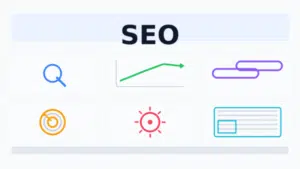
FAQ About SEO Services at CircleAims
What is Search Engine Optimization (SEO)?
A set of technical, content, and off-site practices aimed at increasing your site’s visibility in Google’s (and other engines’) organic results and attracting qualified visits that turn into sales/inquiries.
How long does it take to see SEO results?
Usually 3–6 months for noticeable results on new sites, faster for established ones. It depends on competition, content quality, links, and execution speed.
Can anyone guarantee #1 on Google?
No. No one can guarantee specific positions; we commit to a clear plan, technical/content improvements, and measurable performance goals (qualified visits, conversions).
What’s the difference between Technical, On-Page, and Off-Page SEO?
- Technical: Speed, Core Web Vitals, indexing, sitemaps, link structure.
- On-Page: Keyword research, titles/descriptions, content and internal linking structure, structured data.
- Off-Page: Links and quality of brand signals (Digital PR, local reviews).
What are the most important SEO KPIs?
Growth of top-ranking keywords, qualified organic visits, CTR, conversions (calls/quotes/sales), and customer value.
What are Core Web Vitals and why do they matter?
Three metrics for performance and page experience (loading, interactivity, visual stability). Improving them boosts site speed, user experience, and ranking opportunities.
How do I choose keywords?
Combine purchase-intent and informational terms, balance search volume with difficulty and closeness to your offers. Target long-tail keywords for a faster start.
Is long content always better?
The best content precisely satisfies search intent. It may be long or concise; what matters is depth, structure, practical examples, and proper headings.
What is structured data (Schema)?
JSON-LD markup clarifying page type (article, product, FAQ, organization…) to help Google understand content and enable Rich Results.
Common SEO mistakes?
Slow pages, duplicate/thin content, missing titles/descriptions, broken links, ignoring search intent, poor internal architecture, and not connecting GA4/Search Console.
What’s a safe backlink strategy?
Create content worth citing (research/guides/templates), editorial relationships and Digital PR, brand mentions, and trusted local directories. Avoid low-quality purchased links.
How does Local SEO help local businesses?
Optimize Google Business Profile, consistent NAP data, local pages, genuine reviews, and visibility in “near me” and Google Maps.
What about SEO for e-commerce?
Strong category pages, unique product descriptions, product structured data, reviews, optimized crawl for filters, handling similar pages, fast site/internal search.
How do I avoid duplicate content?
Use canonical tags, noindex low-value pages, and differentiate product descriptions and variants.
Do design changes or platform migrations affect SEO?
Yes. Execute an SEO migration plan: 301 redirect maps, internal checks, indexing, and post-launch performance testing to avoid ranking loss.
What’s the role of AI in content writing?
Useful for research and first drafts, but requires human review and real expertise (E-E-A-T), plus original examples, data, and your own visuals.
How do I calculate SEO ROI?
Organic conversions revenue − SEO cost ÷ SEO cost.
Link keywords/visits to actual conversions using GA4 tracking with goals/events.
(Original formula strings preserved: إيراداتالتحويلاتالعضوية−تكلفةالـSEO إيرادات التحويلات العضوية − تكلفة الـSEO إيراداتالتحويلاتالعضوية−تكلفةالـSEO ÷ تكلفة الـSEO.)
What’s the difference between SEO and PPC? Do I need both?
PPC delivers immediate results with ongoing cost; SEO builds a long-term asset with cumulative value. A smart mix usually drives the best growth.
How many articles should I publish?
Consistency beats volume. Use an editorial plan based on topic clusters and pillar pages with optimized supporting articles.
What essential SEO tools do I need?
Google Search Console, GA4, PageSpeed Insights, a technical crawler (Screaming Frog), a keyword/link tool (Ahrefs/Semrush), plus sitemaps/schema.
Subdomain or subfolder?
For language/blog/store add-ons, a subfolder often transfers authority better. Exceptions may be technical/organizational.
How do I optimize for voice search?
Direct questions, concise answers, FAQ structured data, and mobile/speed optimization.
Could Google updates drop my site?
Core updates can affect sites temporarily. Focusing on quality, search intent, E-E-A-T, and UX restores stability.
What do SEO services cost?
It varies by site size, competition, and scope (audit, technical, content, links). Common models: monthly retainer, fixed project, or consulting.
What’s a concise SEO action plan?
Comprehensive audit → keyword strategy & content maps → technical/speed fixes → content production/optimization → authority & links → ongoing measurement and refinement.
How long does SEO take to show results?
SEO is a long-term process, not as fast as paid ads. Initial results usually appear within 3–6 months, while major results need 6–12 months of steady work.
Can I rely on SEO instead of paid ads?
Yes, but combining both is better. Ads give immediate results; SEO is a long-term investment that sustains traffic after campaigns stop.
Is SEO suitable for all business types?
Absolutely. Whether you run an e-commerce store, service company, local restaurant, or even a personal blog, SEO increases your chances of reaching your target audience.
How do I track SEO results with CircleAims?
We provide detailed monthly reports showing:
- Keywords that improved in ranking.
- Number of visits from Google.
- Conversion rate.
- Suggestions for continuous improvement.
What’s the difference between On-Page and Off-Page SEO?
- On-Page SEO: Optimize internal site elements like titles, content, images, and page speed.
- Off-Page SEO: Build backlinks and improve online reputation to earn Google’s trust.
Why choose CircleAims over other companies?
Because we don’t offer off-the-shelf solutions. We study your business, competitors, and audience, then design a fully customized SEO plan with continuous monitoring and development to ensure sustained success.
What is the cost of SEO services?
Costs vary by site size, market competition, and target keywords. At CircleAims, we tailor a plan to your budget and goals, ensuring the highest possible ROI.
What makes CircleAims’ SEO results distinct?
We don’t rely on templates. We:
- Analyze your business and target audience.
- Create a customized content plan.
- Use modern techniques aligned with Google updates.
- Provide transparent monthly reports showing progress.
Can SEO guarantee the first page on Google?
No company can guarantee #1, as algorithms change constantly. But CircleAims guarantees the best possible results thanks to its expertise, with steady, sustainable improvements that continuously raise your rankings.
What’s the difference between SEO and SEM?
- SEO: Improving organic visibility without paying per click.
- SEM: Search engine marketing via paid ads like Google Ads.
Combining both is usually more effective.
Is SEO suitable for small businesses?
Definitely. Small businesses benefit from SEO by increasing brand awareness and attracting new customers at a lower cost than ads. CircleAims helps SMBs compete with larger players.
What are long-tail keywords?
Specific search phrases like “best pizza restaurant in Nasr City” instead of a generic “restaurant.” These bring more targeted visits with higher conversion probability.
How does UX improvement affect SEO?
Google prioritizes sites that are fast, easy to navigate, and mobile-friendly. We improve UX as a core part of our SEO services to ensure visitors stay longer and conversions increase.
How important is content in an SEO strategy?
Content is the heart of SEO. Articles, blogs, and pages rich in relevant keywords and valuable topics improve your ranking and make your site a trusted resource for customers.
Does CircleAims offer Local SEO?
Yes. We help local businesses appear in Maps results and optimize Google Business Profile to attract nearby customers.
Do I need continuous SEO maintenance?
Yes. SEO isn’t a one-time task; it needs ongoing maintenance to stay aligned with Google updates and evolving competition. CircleAims provides continuous follow-up and reporting to keep you ahead.
Can SEO directly improve sales?
SEO increases targeted site visits, thereby raising conversion and sales opportunities. With integrated digital marketing strategies, CircleAims can turn these visits into tangible profits.
How do I know if an SEO strategy is successful?
Success is measured by:
- Higher rankings for target keywords.
- Increased organic traffic.
- Growth in conversion rate and sales.
- Improved site reputation and customer trust.
Does CircleAims provide SEO for multilingual sites?
Yes, we provide Multilingual SEO to improve visibility across international markets and reach a global audience.
What is Technical SEO and why is it important?
It’s the optimization of the site’s technical foundation (load speed, security, mobile compatibility, structured data). Without it, a site may fail to rank even with strong content. CircleAims treats technical work as a fundamental step.
What top SEO tools does CircleAims use?
- Google Analytics & Search Console for analysis and monitoring.
- Ahrefs & SEMrush for keyword and competitor research.
- Screaming Frog for technical auditing.

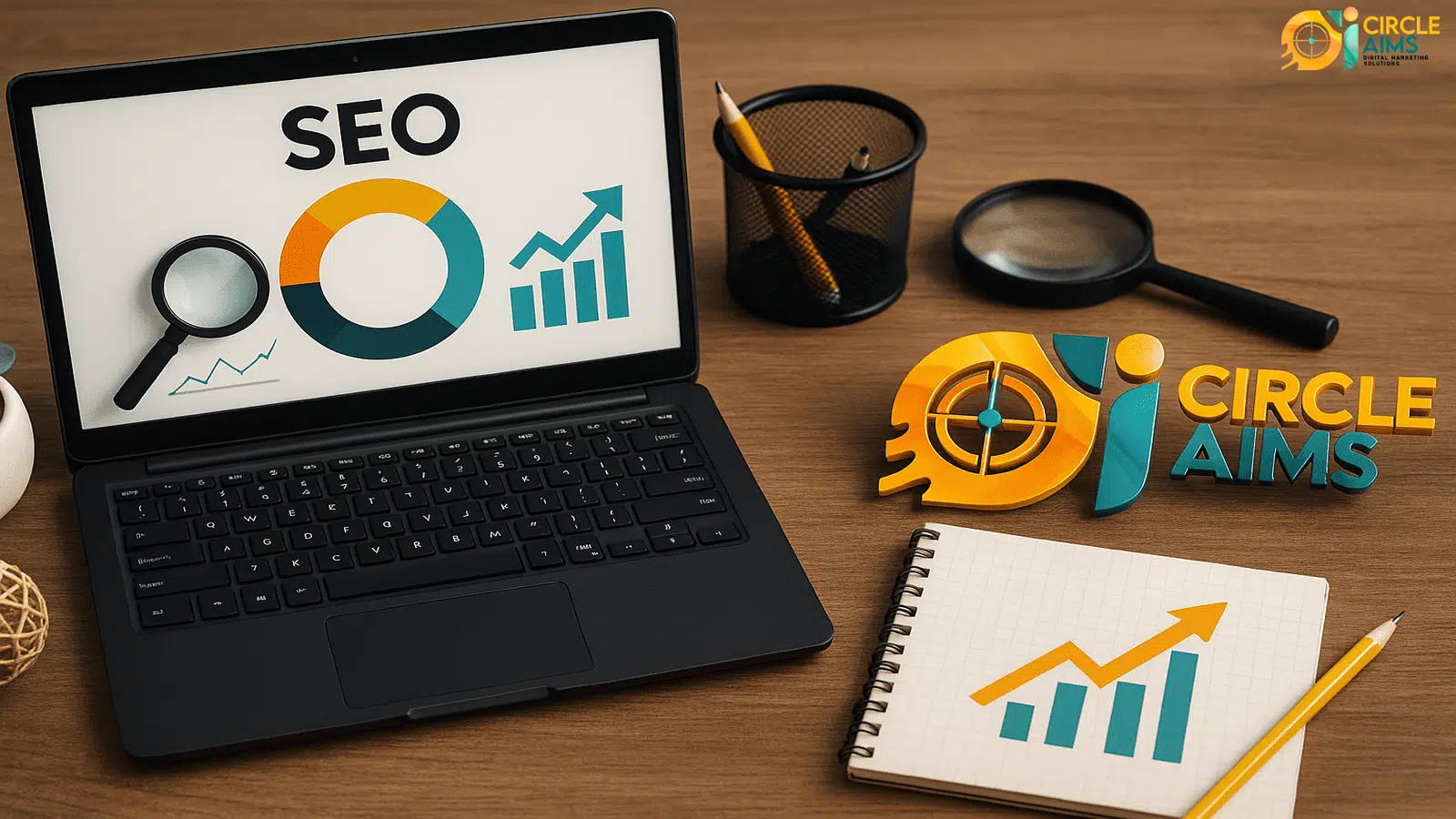


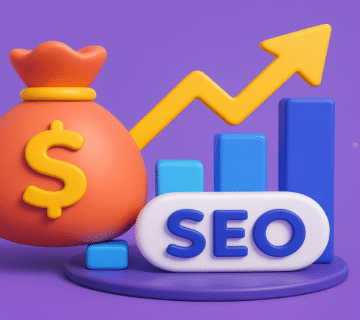
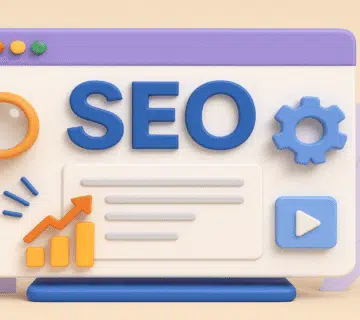
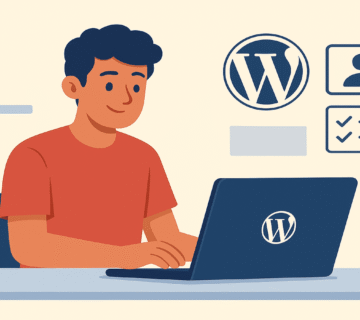
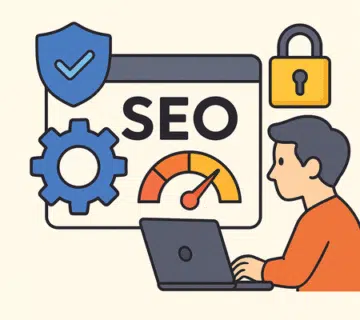
No comment